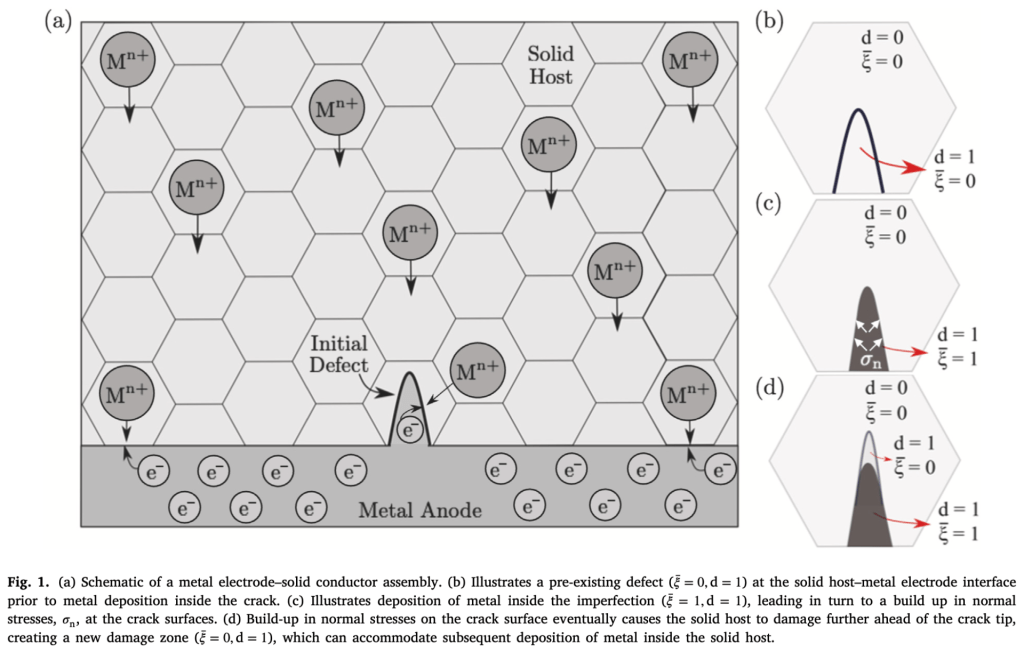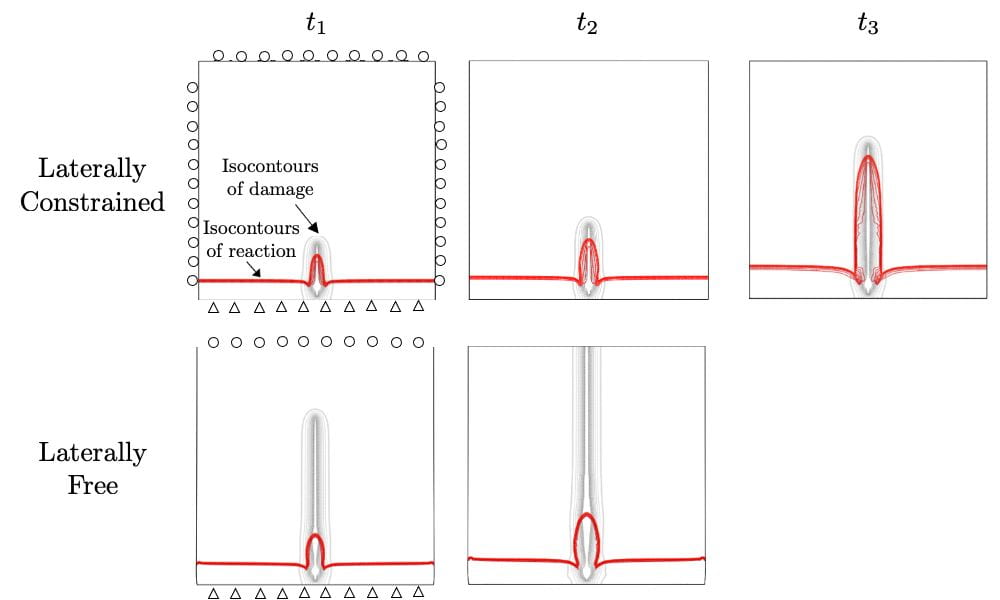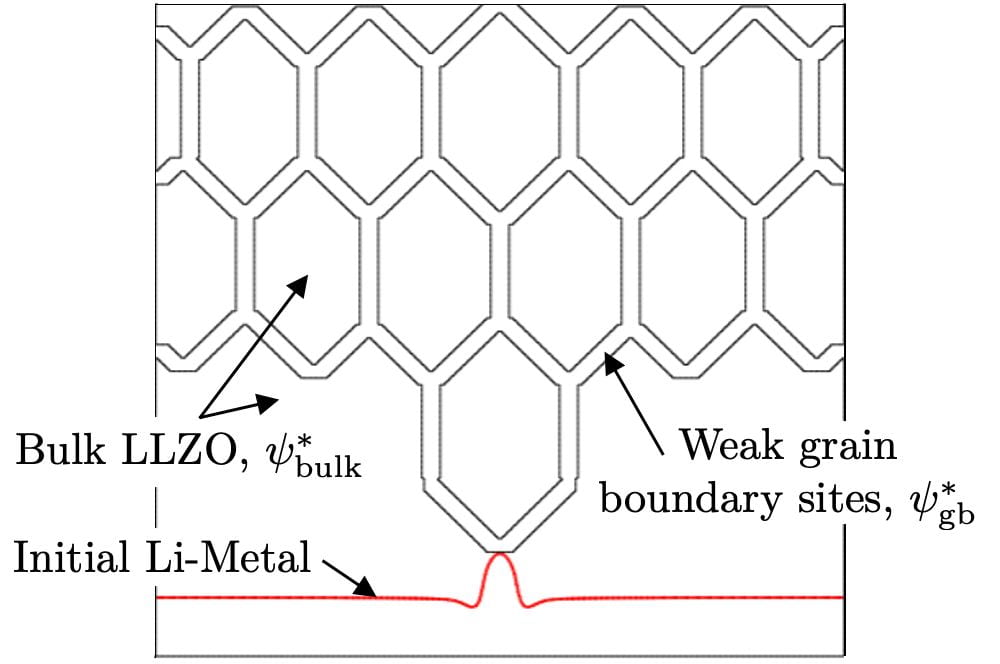This research project aims to develop a continuum theoretical framework which couples (i) diffusion of ionic species through a solid-host, (ii) electrodeposition reactions leading to the formation of new solid material within cracks of the host, and (iii) the evolution of fracture of the solid host. This with the aim of modeling the evolution of Li-metal filament growth in solid-state electrolytes. Particular features of our framework include:
- Captures concurrent charged species diffusion/migration and reactions, coupled to mechanical deformation an damage of the solid host.
- Models concurrent electrodepositon of new material inside cracks and the evolution of cracks using distinct phase-field variables. This present a novel theory coupling phase-field reaction models for LI-metal filament growth with phase-field damage modeling.
- The theoretical framework, and accompanying numerical implementation, allows one to model the role of microstructure heterogeneities (i.e. voids, cracks, grain boundaries) on concurrent fracture of the solid-state electrolyte host and electrochemical growth of Li-metal filaments.
The image below, from Bistri and Di Leo (JMPS, 174, 2023), shows a schematic overview of the theoretical multi phase-field approach.

In the figure below, we model the growth of a single Li-metal filament in a Li-Metal/LLZO architecture, where the red isocontours show the evolution of the Li-filament and the black isocontours the evolution of the crack. The top row show a laterally constrained simulation domain, while the bottom row shows a domain which is laterally free. We can capture the impact of mechanical confinement in dictating the extend to which cracks progress ahead of the Li-metal filament growth, as has been experimentally observed. (See Video in Media Below)


We model the presence of microstructural heterogeneity, such as grain boundaries, by considering a simulation domain as shown on the right. Here, elements describing the grain boundary are a signed a lower critical fracture energy to model their potential to act as defects for fracture and subsequent Li-filament growth.
The image below shows contours of reaction coordinate (top row) and damage (bottom row) for three simulations with different ratios of grain boundary to bulk critical fracture energy. We capture the manner in which the ratio of these strengths dictates whether Li-metal filaments grow preferentially through the grain boundary network, or pierce through the bulk of the grain. (See Video in Media Below)

Publications
Bistri, D. Di Leo, C.V. “A continuum electro-chemo-mechanical gradient theory coupled with damage: Application to Li-metal filament growth in all-solid-state batteries”. Journal of the Mechanics and Physics of Solids, 174, 2023. [html]

